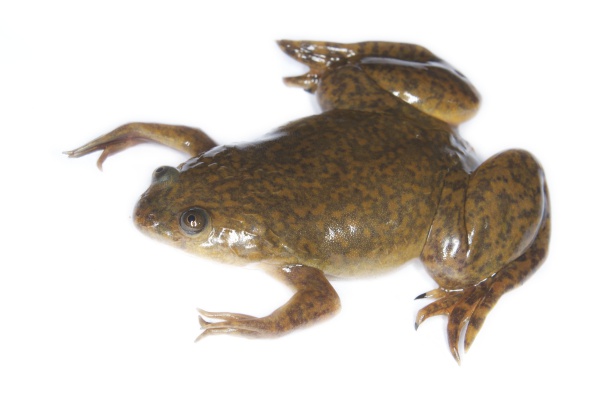Facts About African clawed frog
The African clawed frog, or Xenopus laevis, is a captivating aquatic species indigenous to Sub-Saharan Africa that has spread to other parts of the globe. These frogs are members of the Pipidae family and are easily identified by the three short claws on each of their hind feet, which they use to tear apart food. Unlike many other frogs, they lack tongues and teeth, relying instead on their hands and a specialized hyobranchial pump to feed. Their strong legs make them exceptional swimmers, enabling them to swiftly lunge at prey and use their claws to manage larger pieces of food.
Naturally scavengers, these frogs consume a wide range of living, dying, or dead organisms. Typically found in the ponds and rivers of Sub-Saharan Africa, they blend seamlessly into their environment with greenish-grey coloration. Their reproduction process is noteworthy; they fertilize eggs externally and exhibit unique mating behaviors. Remarkably adaptable, they can endure harsh conditions, such as burrowing into mud during droughts. They also possess a long lifespan and shed their skin seasonally, accompanied by distinct mating calls and behaviors.
In their natural habitat, Xenopus laevis thrive in the wetlands and lakes of Sub-Saharan Africa and hold cultural significance. They are also invaluable to scientific research. Over the years, they have been extensively used in biomedical studies, including early pregnancy tests. Today, they continue to be crucial in molecular, cellular, and developmental biology research.
Many people keep African clawed frogs as pets, and they are commonplace in research labs. However, they can become problematic when introduced to non-native environments. As invasive species, they pose a significant threat to local ecosystems by preying on the young of native species. Consequently, regulations are in place in several US states, making it illegal to own them without a permit.

 Eswatini (Swaziland)
Eswatini (Swaziland)